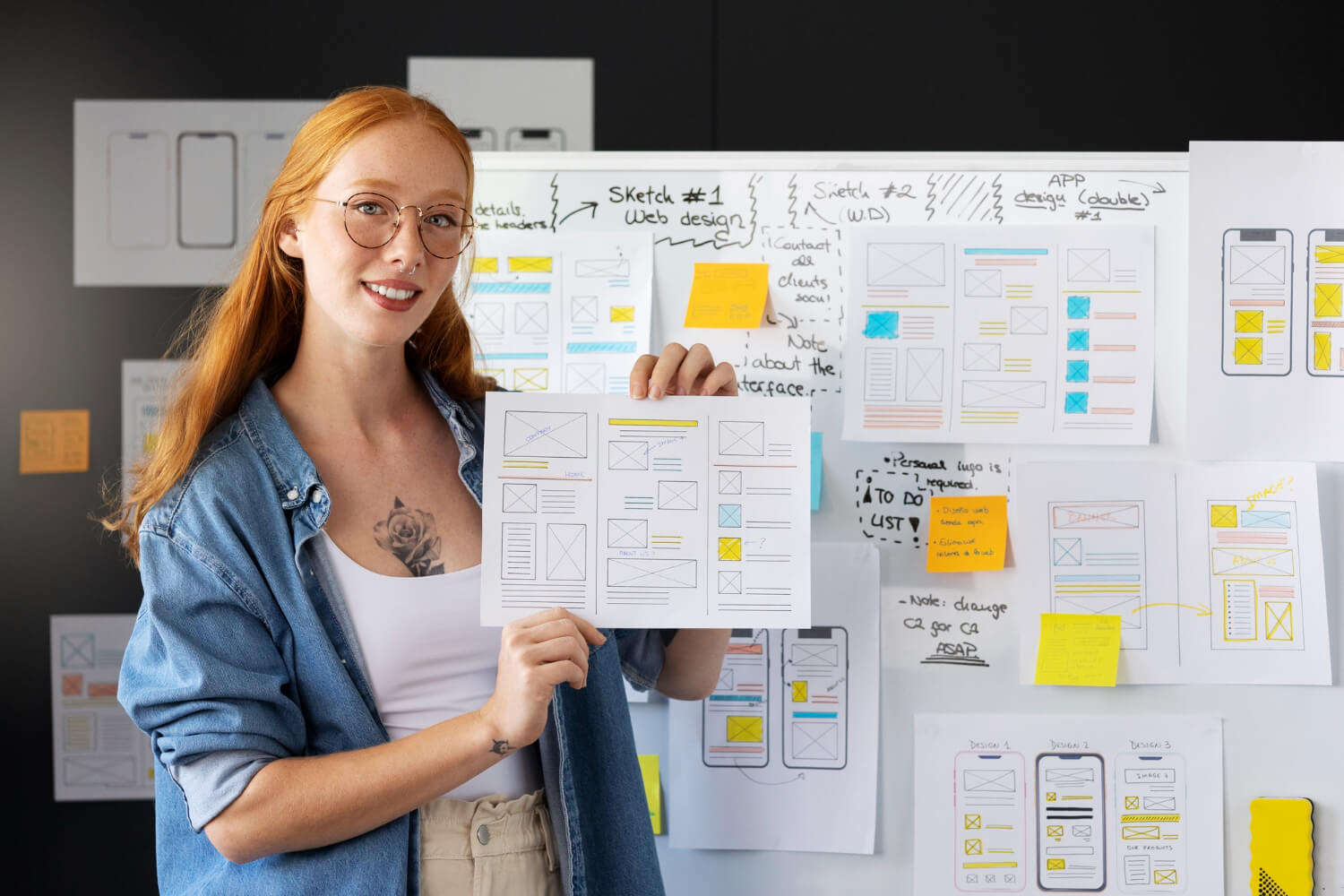The digital world is in a perpetual state of evolution, and web design is no exception. As we step into 2023, it’s crucial for businesses and designers to stay ahead of the curve by understanding the latest trends. In this article, we’ll explore what’s in and what’s out in the realm of web design for 2023.
In: Dark Mode Dominance
Dark mode has been steadily gaining popularity, and in 2023, it’s poised to dominate the web design landscape. Users love dark mode for its sleek and modern appearance, reduced eye strain in low-light environments, and improved battery life on mobile devices with OLED screens.
Designers are experimenting with dark backgrounds, bold typography, and vibrant accent colors to create visually striking websites. Implementing dark mode not only adds a contemporary touch but also caters to user preferences.
Out: Cluttered and Overly Complex Designs
Gone are the days of cluttered and overly complex website designs. Users today crave simplicity and ease of navigation. Extraneous elements, excessive animations, and crowded layouts are falling out of favor.
Designers are opting for clean and minimalist designs that focus on the essentials. Streamlined layouts, ample white space, and intuitive navigation menus are key elements of modern web design.
In: 3D Graphics and Illustrations
Three-dimensional graphics and illustrations are making a splash in 2023. These dynamic visuals create depth and realism, adding an immersive quality to websites. From product displays to storytelling elements, 3D graphics are enhancing user engagement and interactivity.
Designers are using 3D elements to breathe life into websites, making them more captivating and memorable. It’s a trend that caters to the visual appetite of modern audiences.
Out: Flat and Two-Dimensional Designs
While flat design had its moment in the sun, it’s now taking a backseat to more dimensional approaches. Flat designs, characterized by minimalism and simplicity, are giving way to richer and more visually dynamic aesthetics.
Designers are finding creative ways to incorporate depth and texture into their websites, moving away from the two-dimensional look that has dominated for the past several years.
In: Microinteractions for Engagement
Microinteractions, those subtle animations and feedback mechanisms, are gaining prominence as a means of enhancing user engagement. These small, purposeful animations provide feedback, guide users, and create delightful moments throughout the user journey.
From hover effects to button animations, microinteractions add a layer of interactivity that keeps users engaged and informed. They provide a more enjoyable and intuitive browsing experience.
Out: Static and Passive Experiences
Static and passive web experiences are falling out of favor as users seek more dynamic and engaging interactions. A static website with minimal user feedback can leave visitors feeling disconnected and uninvolved.
To stay relevant, web designers are infusing websites with micro interactions and other interactive elements that respond to user actions, creating a more engaging and responsive experience.
In: Accessibility-First Design
Web accessibility is no longer an afterthought; it’s a fundamental requirement. Inclusive design is a top priority in 2023, with designers ensuring that websites are accessible to all users, including those with disabilities.
Designers are incorporating features such as alternative text for images, keyboard navigation, and screen reader compatibility into their designs. This not only makes websites more accessible but also improves SEO and widens the audience reach.
Out: Ignoring Accessibility
Ignoring accessibility is no longer acceptable in web design. Failing to make websites accessible not only excludes a significant portion of potential users but also risks legal repercussions. The shift towards accessibility-first design is reshaping the industry’s standards and practices.
In: Typography as a Focal Point
Typography has emerged as a powerful design element in 2023. Web designers are using bold, custom fonts to create distinctive and memorable brand identities. Large, attention-grabbing typography serves as a focal point, drawing users into the content.
Custom fonts, creative typography pairings, and expressive lettering are helping websites stand out in a crowded digital landscape.
Out: Standard and Uninspired Typography
Generic and uninspired typography is no longer appealing to users who expect a more visually stimulating online experience. Using default fonts and failing to pay attention to typography choices can result in a lackluster website.
Web designers are steering clear of commonplace typography in favor of unique and engaging font selections that add character and flair to their designs.
In: Sustainable Design Practices
Sustainability is a growing concern, and web design is no exception. In 2023, designers are prioritizing eco-friendly design practices. This includes optimizing website performance to reduce energy consumption, minimizing carbon footprints, and using eco-conscious hosting services.
Sustainability isn’t just a trend; it’s a responsible approach to design that resonates with environmentally conscious users.
Out: Resource-Intensive Design Elements
Resource-intensive design elements, such as oversized images and videos that slow down website loading times, are falling out of favor. Users expect websites to load quickly and efficiently, and resource-heavy designs can frustrate visitors.
Designers are adopting more sustainable practices that prioritize website performance and minimize environmental impact.
Conclusion: Adapting to the Ever-Evolving Digital Landscape
Web design is a dynamic field that evolves in response to changing user preferences, technological advancements, and societal shifts. Staying updated with the latest trends and knowing what’s in and what’s out is essential for web designers and businesses alike.
As we step into 2023, embracing these emerging trends while letting go of outdated practices will help create websites that are not only visually appealing but also user-friendly, engaging, and future-proof. In the ever-evolving digital landscape, adaptability is key to success, and these trends are shaping the future of web design.

